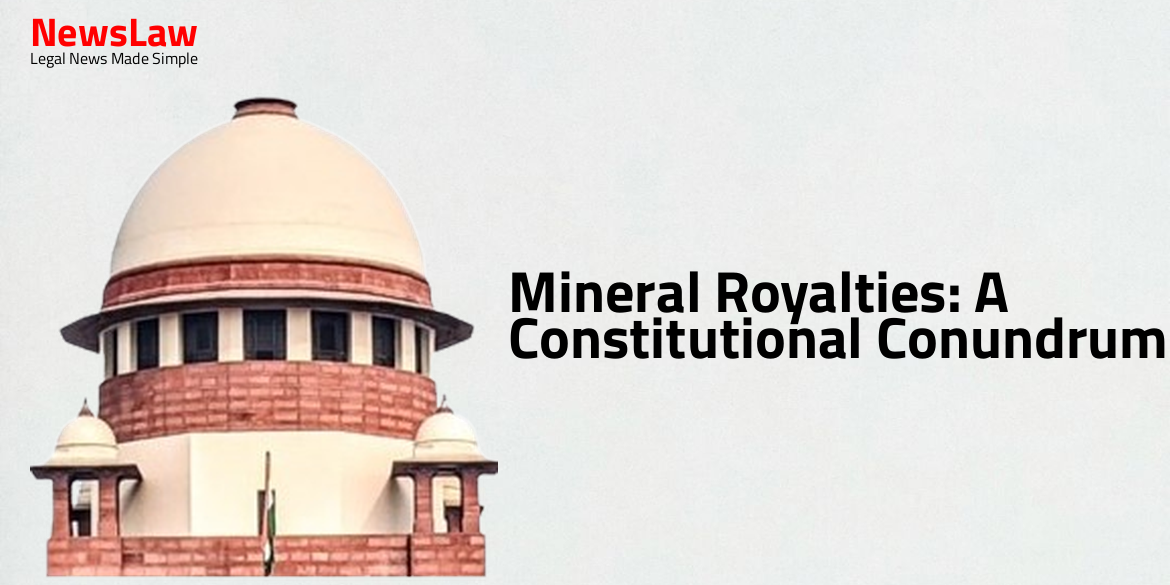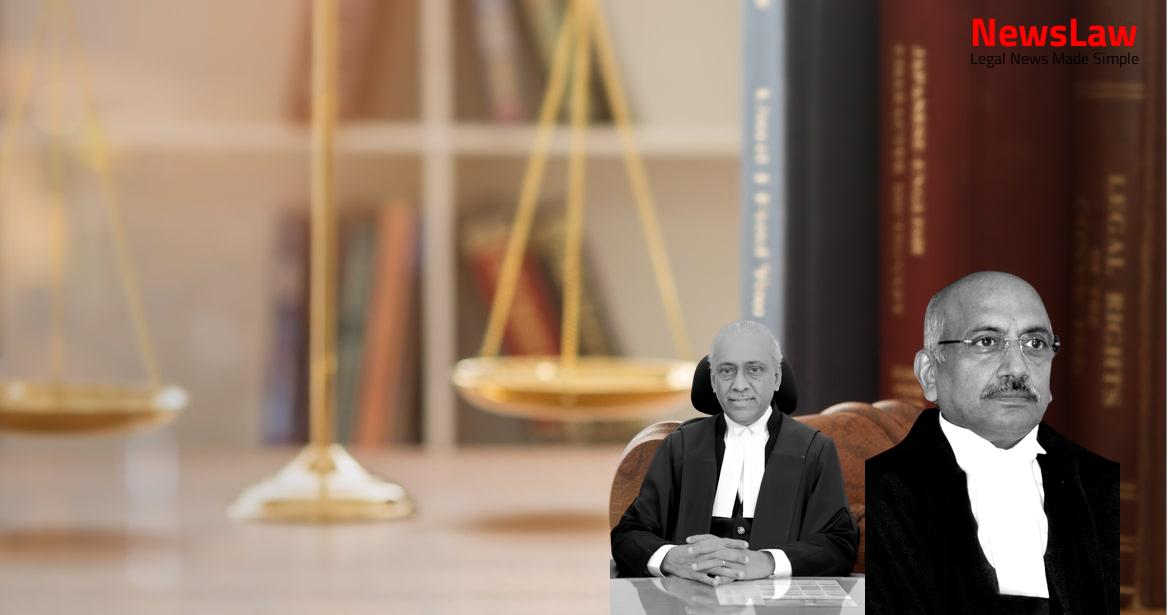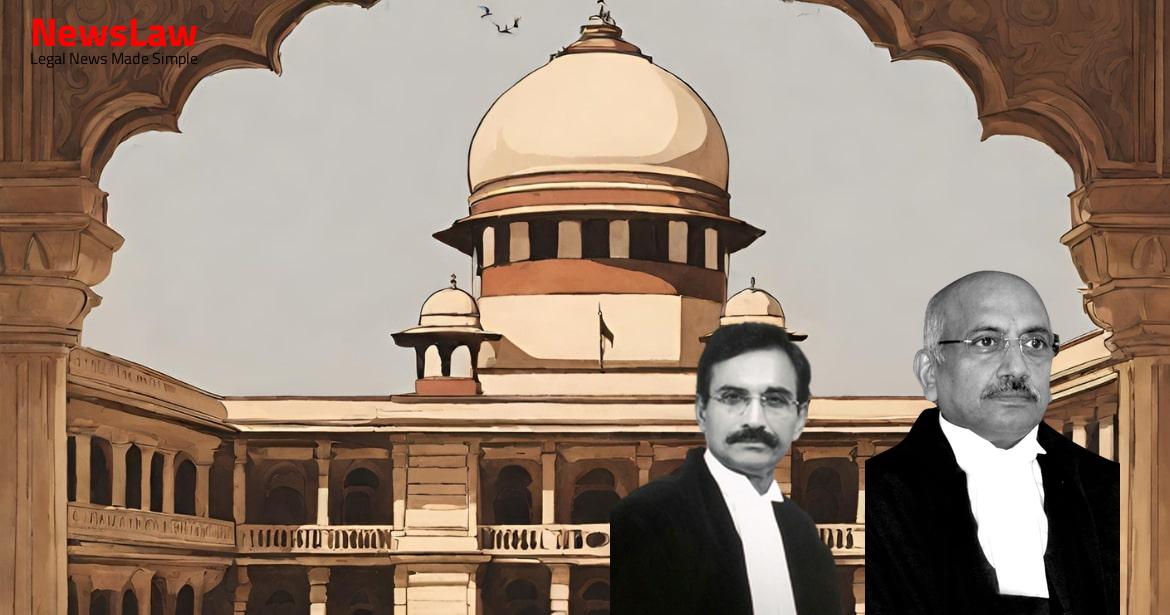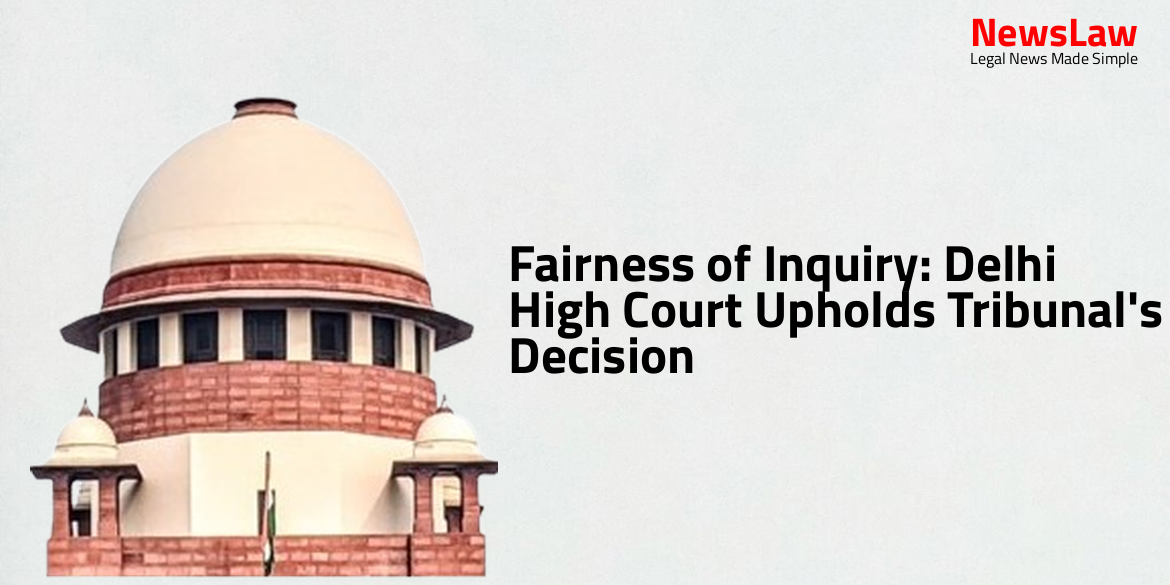Exploring the nuanced discussion on mineral royalties within the recent Supreme Court judgment. The case delves into the intricacies of constitutional entries and their impact on mineral development. This analysis sheds light on the ongoing legal debate that has significant implications for the mining sector. #MineralRoyalties #ConstitutionalLaw #SupremeCourt
Facts
- Legislative entry at the core of the reference is Entry 50 of List II of the Seventh Schedule relating to regulation of mines and mineral development.
- MMDR Act serves as a comprehensive code for regulation of mines and mineral development.
- The levies imposed were challenged on grounds of violation of India Cement case law.
- Predominant subject of legislation is relatable to Entry 54 of List I.
- Various State legislatures imposed taxes on mineral-bearing land post India Cement and Kesoram case laws.
- States like Rajasthan and Uttar Pradesh imposed environment and health cess and transportation fees for coal.
- The Mines and Minerals (Development and Regulation) Act, 1957 was enacted by Parliament to regulate mining.
- State legislatures’ authority under Entry 23 of List II is subject to provisions of Entry 54 of List I.
- Constitutional validity of State levies was challenged on grounds of exceeding legislative competence.
- The High Court allowed the petition based on the India Cement case
- It was held that the PART A 11 tax was not covered under Entry 49 of List II of the Seventh Schedule
- The Orissa Act was deemed ineffective due to the MMDR Act, 1957
Also Read: NEET (UG) 2024 Examination Integrity Case: Supreme Court Verdict
Issue
- The true nature of royalty determined under Section 9 read with Section 15(1) of the MMDR Act is being questioned.
- The main issue is whether royalty is in the nature of a tax or an exaction.
- The interrelation between List II Entry 50 and List I Entry 54 in the context of taxing mining land is under scrutiny.
- The scope of Entry 49 of List II and how it relates to taxes involving land produce is being examined.
- The specific nature of Entry 50 of List II in relation to Entry 49 of List II, particularly in the context of mining land, is being deliberated.
Arguments
- The petitioners argued that royalties and dead rent under the MMDR Act are compulsory imposts and not the result of negotiations.
- The judgment in India Cement and subsequent cases have established that royalties are not considered a tax.
- The Parliament enacted the Validation Act in 1992 to validate incompetent levies on royalties, which had been set aside by the courts.
- The MMDR Act curtails the powers of State legislatures under Entry 50 of List II regarding levies on minerals.
- The State legislature argued that they could impose levies under Entry 50 of List II even after the enactment of the MMDR Act.
- Arguments were made regarding the meaning of royalties and taxes on mineral rights, with a focus on the implications of various constitutional entries.
- The taxation Entry 50 of List II is subject to limitations imposed by Parliament under Entry 54 of List I, especially concerning laws related to mineral development.
- The MMDR Act is considered a complete code regulating mineral development and taxation of minerals and mineral rights.
- Various senior counsels and learned advocates presented arguments regarding the interpretation of constitutional entries and the implications on State and Parliament’s taxing powers.
- The consequences of different interpretations regarding taxation on mineral rights were discussed, including implications on the economy and mineral development.
- The respondents argue that there is no provision in the MMDR Act for notional segregation of minerals from land.
- The decoupling of minerals from land occurs only when a lessee exercises their mining rights.
- They argue that the expression ‘tax on mineral rights’ in Entry 50 of List II does not empower State legislatures to levy tax on minerals.
- The concept of inter-generational equity is emphasized to balance State legislatures’ power to tax mineral rights against mineral development needs.
- It is submitted that under a mining lease, the lessee is granted both the demised area and mineral rights.
- The totality of levies related to minerals and mineral rights in the MMDR Act leaves nothing for State legislatures to tax under Entry 50 of List II.
- The respondents contend that the lessee acquires rights to minerals only upon extraction and payment of royalty, not at the signing of the mining lease.
- They argue that since the tax under Entry 50 of List II is on the landowner, it applies to private lessors who own the land.
- The MMDR Act restricts the state legislature’s authority regarding mines, mineral development, and taxes on mineral rights.
- The argument that the value of minerals can be used to tax mineral-bearing land under Entry 49 of List II is refuted, as land and minerals are intertwined until extraction.
- The MMDR Act abstracts the State’s legislative field regarding mines and minerals, limiting the state’s jurisdiction.
Also Read: CRPF Act: Validity of Rule 27 for Compulsory Retirement – Case of Head Constable vs. CRPF
Analysis
- Section 9 of the Mines and Minerals (Development and Regulation) Act, 1957 deals with the payment of royalty by holders of mining leases.
- Section 9A of the Act pertains to the payment of dead rent by the lessee annually to the State Government.
- Chapter IV of the Act governs matters related to grant of mining leases for land where minerals vest in the Government, while Chapter V outlines procedures for obtaining mining leases on land where minerals vest in private persons.
- Rules under Chapter IV prescribe conditions for mining leases, and the same conditions are made applicable to leases of minerals vested in private persons with modifications.
- Article 265 of the Constitution specifies that no tax shall be levied or collected except by authority of law.
- Article 366(28) of the Constitution defines ‘taxation’ to include any tax or impost, whether general, local, or special.
- The payment of royalties under the MMDR Act is considered as a tax as per the definition of taxation in the Constitution.
- Recovery of sums due to the Government under the Act, including rent, royalty, tax, fee, or other sum, can be done in the same manner as arrears of land revenue.
- The true nature of royalty determined under Section 9 read with Section 15(1) of the MMDR Act is considered to be in the nature of a tax.
- Rule 45 of the Act specifies certain conditions applicable to mining leases in respect of minerals vested in the Government, which are also made applicable to leases of minerals vested in private persons.
- The overruling of certain observations in Kannadasan by a three-judge Bench in Tata Iron and Steel does not address the issue of the competence of State legislatures to impose cess and other taxes based on royalty or in addition to royalty.
- The majority judgment in Kesoram is likely to be overruled for the reason that it wrongly held royalty is not a tax. This was based on a doubt stemming from a ‘typographical error’ in the India Cement judgment.
- The three-judge Bench in Tata Iron and Steel clarified that the Validation Act was temporary and did not empower States to levy previously struck-down taxes or collect arrears post a certain date.
- The aspect of tax on lands not including tax on removal or excavation of land was addressed by the three-judge Bench in Tata Iron and Steel.
- Kannadasan was partially overruled by a three-judge Bench in District Mining Officer vs Tata Iron and Steel Company, but on a different issue which will be discussed later.
- In the case of M.A. Tulloch, before a Constitution Bench, the validity of the Orissa Mining Areas Development Fund Act, 1952 and cancellation of issued notices of demand were questioned.
- Sections 9, 9A, and 25 of the MMDR Act, 1957 limit Entry 50 – List II.
- The majority decision in Kesoram stating royalty is not a tax is overruled.
- Entry 49 – List II taxes on lands and buildings do not apply to mineral-bearing lands.
- Declaration under Section 2 of MMDR Act, 1957 falls under Entry 54 – List I.
Case Title: MINERAL AREA DEVELOPMENT AUTHORITY ETC. Vs. M/S STEEL AUTHORITY OF INDIA . (2024 INSC 554)
Case Number: C.A. No.-004056-004064 – 1999



